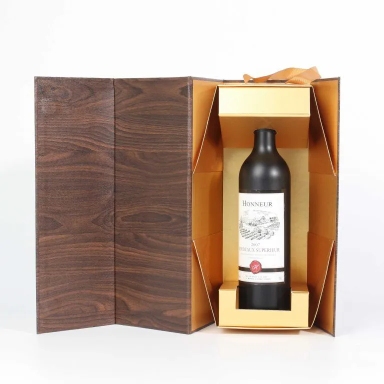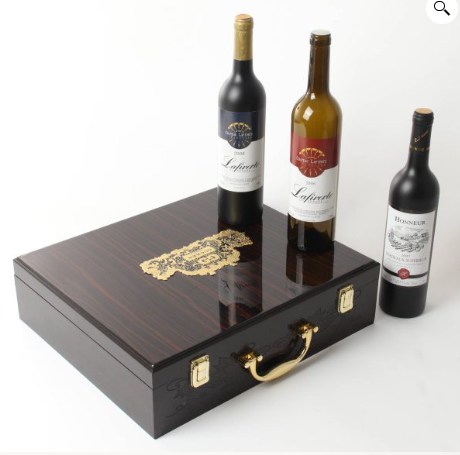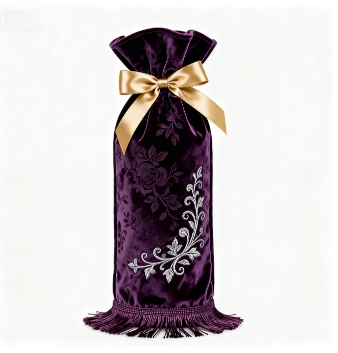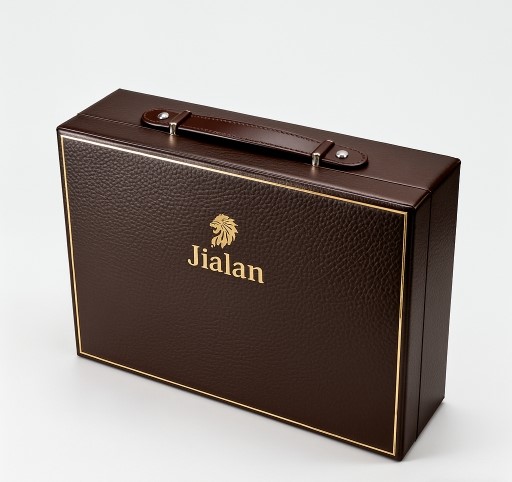Have you ever noticed how some wine boxes stand out on the shelf while others seem to disappear? The secret often lies in the material they are made from. Choosing the best one is not only about appearance. It is also about keeping your wine safe, making your brand look good, and even helping the environment. This guide will help you understand different materials used for wine boxes. We will explore which options work well for different situations, from strong protection to attractive designs. If you make wine or are building a brand, this can help you get noticed. Let us go through it step by step.
Wine boxes do more than just carry bottles. They help tell the story of your product. A weak box might make people think the wine is cheap. A strong, beautiful box says high quality. That is why comparing materials is so useful. We will look at popular choices, their good points and bad points, and how they fit your needs. By the end, you will know more about which material is better for your wine box.
Common Materials Used in Wine Boxes
Wine boxes come in all sorts of materials, each with its own strengths. Think about what you need: something tough for shipping, or fancy for gifting? Here’s a rundown of the basics.
Cardboard and Board Types
Cardboard is a go-to for many. It’s lightweight yet strong. Gray board, for example, forms a solid base. Pair it with specialty papers, and you get a custom feel without breaking the bank. This combo holds up well against bumps during transport.
Kraft paper adds a rustic touch. It’s brown and textured, perfect for eco-friendly vibes. White card, on the other hand, gives a clean, modern look. It’s smooth and prints well, so your logos pop.
Then there’s gold or silver cardboard. These shine—literally. They add a premium sparkle, great for high-end wines. Flocked paper feels soft, like velvet, while leather-textured paper mimics real hide for that luxurious edge.
Eco-Friendly Options
Going green? Look for FSC-certified materials. These come from responsibly managed forests. They don’t skimp on quality either. You can use them in most box styles, from rigid ones to foldable designs.
Corrugated board is another winner here. It’s wavy inside for extra cushioning. This keeps bottles safe and reduces waste since it’s recyclable.
Comparing Durability: What Holds Up Best?
Durability matters a lot. No one wants a box that crumbles mid-journey. Let’s compare how these materials stack up.
Gray board with specialty paper is tough. It resists tears and dents. Ideal for long hauls. Kraft paper? It’s sturdy but can show wear if wet. Keep it dry, and it’s fine.
White card bends less than plain paper. It handles weight well—think multiple bottles. Gold and silver versions add shine but might scratch easier. Use them for display more than rough handling.
Flocked and leather-textured papers feel great but aren’t the toughest. They’re better for short trips or store shelves.
Corrugated options win for protection. The layers absorb shocks. FSC materials match this strength while being kind to the earth.
Here’s a quick table to see side by side:
| Material Type | Durability Level | Best For |
| Gray Board | High | Shipping |
| Kraft Paper | Medium | Eco looks |
| White Card | High | Printing |
| Gold/Silver Card | Medium | Premium appeal |
| Flocked Paper | Low | Touch feel |
| Corrugated Board | Very High | Heavy protection |
Pick based on your wine’s journey. Shipping overseas? Go high durability. Local sales? Medium might do.
Aesthetics and Brand Impact: Making Your Box Stand Out
Looks sell. A wine box isn’t just packaging—it’s your brand’s first hello. Comparing materials here means thinking about visuals and feel.
Specialty papers let you play with textures. Gray board underneath keeps it firm, while the outer layer adds flair. Kraft gives a natural, earthy vibe. Suits organic wines.
White card is blank canvas heaven. Colors print sharp and true. Add a logo, and it pops. Gold or silver? They scream luxury. Perfect for special editions.
Flocked paper feels plush. Touch it, and people remember. Leather-textured ones add sophistication without real leather’s cost.
How does this boost your brand? A well-chosen material aligns with your story. Eco materials say you care about the planet. Shiny ones position you as upscale. It builds trust. Customers see quality outside, expect it inside.
Think about events too. At wine shows, a standout box draws crowds. It elevates your personal brand if you’re a small producer. Big brands use it to stay top-of-mind.
Cost Considerations: Balancing Quality and Budget
Money talks. Comparing materials helps you spend smart.
Basic cardboard like gray board is affordable. Add kraft or white card, and costs stay low for bulk orders.
Gold and silver bump up the price. They’re worth it for premium lines. Flocked and leather-textured? Mid-range, but add value through touch.
Corrugated is cheap for its strength. FSC options might cost a bit more upfront, but they pay off in customer loyalty.
Bullet points on saving tips:
- Order in bulk: Drops per-unit cost.
- Mix materials: Use fancy on top, basic inside.
- Go custom: Tailor to avoid waste.
Small batches? Start with samples. Test what fits your wallet and needs.
Environmental Factors: Going Green with Your Choice
Sustainability is big now. Customers want brands that care. So, when comparing materials, check their eco footprint.
FSC-certified papers are top picks. They ensure trees are replanted. Recyclable options like kraft and corrugated cut down on trash.
Avoid plastics where possible. Paper-based materials break down easier.
This choice boosts your brand. Tell customers about it—they’ll share. It sets you apart in a crowded market.
For personal brands, it shows values. Winemakers who go green attract like-minded buyers. It’s a win-win.
Customization Possibilities: Tailoring to Your Needs
Every wine is unique. Your box should be too. Materials open doors to custom designs.
Rigid boxes with gray board hold shapes well. Add magnetic closures for that satisfying snap.
Foldable ones save space. Use kraft for easy storage.
Drawer styles? White card slides smooth.
Handles on portable boxes? Corrugated adds grip.
Inserts like foam or trays? They fit any material, keeping bottles snug.
This customization lifts your brand. Make it yours, and customers notice. It turns a simple box into a statement.
About Yiwu Jialan Packaging Co., Ltd.
Looking for a reliable partner in wine boxes? Yiwu Jialan Packaging Co., Ltd. stands out as a key supplier. Based in Yiwu City, China, they’ve been in the game since 2014. Their setup covers over 7,000 square meters, with more than 100 skilled workers churning out up to 100,000 pieces daily.
They handle everything from design to delivery. With experience serving over 30 countries, they know global needs. Their focus on wine packaging means custom solutions for any style—rigid, foldable, or eco-friendly. They use advanced lines for quick turnaround and top quality. If you’re after boxes that protect and impress, they’re a solid choice.
Conclusion
Wrapping up, comparing materials for your wine box boils down to your goals. Durability for travel, looks for branding, cost for budget, and green options for the future. The right pick protects your wine and builds your story. It can turn a good product into a memorable one. Take time to weigh options—it pays off in sales and loyalty.
FAQs
What factors should I consider when comparing materials for a wine box?
Think about strength, looks, and eco-impact. A tough material like corrugated board keeps bottles safe during shipping. For appeal, gold cardboard adds shine. Always check if it’s recyclable to match your brand’s values.
Which material is better for an eco-friendly wine box?
FSC-certified papers or kraft stand out. They’re from sustainable sources and break down easily. This choice not only protects the environment but also appeals to green-minded customers, boosting your brand.
How does choosing the right material make a wine box better for branding?
It aligns with your image. A luxurious texture like flocked paper feels premium, making your wine seem high-end. Simple cardboard keeps it affordable yet professional. The key is matching it to your story for stronger customer connections.
Is corrugated board better than plain cardboard for wine boxes?
Yes, often. It has layers for extra cushioning, reducing breakage risks. Plain cardboard works for lighter use, but corrugated shines in tough conditions. Compare based on your shipping needs.
Can I customize materials to find what’s better for my specific wine box?
Absolutely. Mix options like gray board with specialty paper for unique feels. Start with samples to test. This way, you get a box that’s just right, enhancing protection and style.













